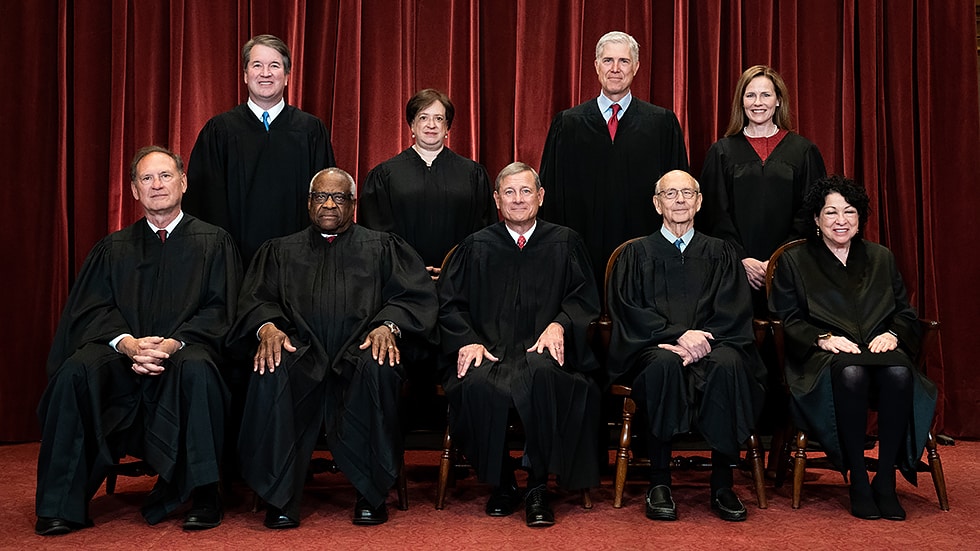Even if you cringe at last week’s ruling in Dobbs v. Jackson Women’s Health, it would be wrong to say that the five Supreme Court justices took away women’s right to have abortions.
I say this because the Supreme Court, unfortunately, never actually recognized a women’s right to terminate a pregnancy. Instead, what the Court did in 1973 in Roe v. Wade (and reaffirmed in 1992 in Planned Parenthood v. Casey) was to grant women permission to have abortions up to a judge-defined moment. (Such court permission-granting is not unique to abortion.)
A permission is obviously not a right; it is the opposite. Individual rights are commonly understood as principles that morally and legally protect activities that individuals by their nature are entitled to engage in free from aggression by others, even the people regarded as government officials. (“I know my rights!”) Contractual rights are conditioned on the terms of the contract, but those are not the kind of rights we’re talking about here.
Yes, the Roe and Casey opinions used rights language. And in their dissent in Dobbs, Justices Stephen Breyer, Elena Kagan, and Sonia Sotomayor write, “Roe held, and Casey reaffirmed, that the Constitution safeguards a woman’s right to decide for herself whether to bear a child.”
But we shouldn’t be misled by that language because their dissent also states, in defending Roe and Casey, “Respecting a woman as an autonomous being, and granting her full equality, meant giving her substantial choice over this most personal and most consequential of all life decisions.” (Emphasis added.) Not full choice — just “substantial choice.” Why not full choice? Because, write the dissenters, “the State had, as Roe had held, an exceptionally significant interest in disallowing abortions in the later phase of a pregnancy.” Permission granted; permission revoked.
Specifically, the Roe Court said that women have a constitutionally protected right to privacy with respect to their pregnancies — but only until the state’s “compelling interest in the potentiality of human life” kicks in after the second trimester or (in Casey) when the fetus becomes viable outside the womb. This doesn’t sound like a matter of rights, but rather an exercise in the Court’s subjective balancing of competing interests. What the Court calls “constitutional rights” sound like something else. This take on the Court’s views will please anyone who conscientiously objects to abortion as murder. But it ought to dismay those who believe with equal conviction that women do possess a right to end their pregnancies. The Roe Court misled them.
So what now? Everyone understands that the Court did not outlaw abortion. Instead, it sent the matter, to use conventional political language, to the people and their elected representatives in the several states. Who could object to that?
Well, lots of people could. Those who believe that individuals have a natural right to life, liberty, and property should be concerned about leaving the question of rights to majority rule. Majorities can be and often are wrong: they can call something a right that isn’t, and they can deny that something is a right that is.
On top of that, the flaws intrinsic to representative democracy are well documented, starting with the perverse incentives and irresponsibility generated by the fact that a single vote is almost never decisive. (George Bush’s remarkably close 2000 victory in Florida had a margin of 537 votes. But no individual voter had more than one vote.) If any voter doubts his electoral impotence, he should compare how he would prepare for an election in these two scenarios: the first in which, as normal, he has only one vote; the second in which he also has only one vote but has been assured by divine intervention that whomever he votes for is guaranteed to win.
Democracy also falls short of the textbook ideal because, in light of the impotence of a single vote, most people have better things to do than invest the time, money, and effort required to properly educate themselves about the consequences of what the candidates say they would do if elected. (That would require studying economics, among other things.)
Moreover, no single voter will incur more than a tiny fraction of the full social cost of his making a bad decision at the polls. (This assumes that candidates, who represent a shopping cart of positions on diverse issues, will even keep their campaign promises.) And we also have the problem that highly motivated and concentrated single-issue interest groups will often prevail over the far larger but unorganized mass of citizens. This is the plague of concentrated benefits and dispersed costs. (For an elaboration of these flaws, see Bryan Caplan’s The Myth of the Rational Voter: Why Democracies Choose Bad Policies. Ilya Somin and Jason Brennan have also written books on this subject. See also my “Is ‘Free Election’ an Oxymoron?” and “The Crazy Arithmetic of Voting.”)
I join those who worry about having our rights determined by majority rule in the state legislatures. But what’s the alternative? Until a free market in rights protection and conflict resolution is a live option, it seems the only alternative is what we now have: the U.S. Supreme Court.
But shouldn’t advocates of liberty be concerned about that too? As many have pointed out, the Court resembles an unelected, life-tenured supreme legislature that allows no easy appeal. We may like the Court when it agrees with us, but what about when it doesn’t? Even a court that seems committed to individual rights could have a different notion of rights than you or I have. It might sanction pseudo-rights, such as taxpayer-financed abortion, that conflict with authentic rights. Or it might refuse to sanction an authentic right. What do we do in those cases? Do we need a Supremer Court to correct the Supreme Court? And a Supremerer Court to correct the Supremer Court, ad infinitum?
Libertarians who don’t want rights left to state legislatures should beware of the Nirvana fallacy, comparing real-world legislatures to an idealized Supreme Court. State legislatures are fraught with danger, but we won’t soon see a Supreme Court full of justices who embrace the rights theory of Ayn Rand, Murray Rothbard, or [insert name of favorite libertarian]. The question, then, is: what is the least-bad alternative in the meantime.
Contrary to what many want to believe, the Constitution does not instruct us in how it is to be interpreted or direct us to someone’s — Madison’s? Hamilton’s? — interpretation. But even if it did, an internal or external interpretation would also be subject to interpretation. “Any interpretation still hangs in the air along with what it interprets, and cannot give it any support,” Wittgenstein wrote about rule-following.
There could be no correct reading of the Constitution. One might say that a particular reading is more reasonable (here’s one perhaps) and another less reasonable, but we have no way to pronounce a reading the correct one. A reading could be clearly wrong, but not clearly right.
It is not as if we could have a computer that could infallibly decide constitutional questions. To qualify, that computer could not be programmed by a human being, or else it would be vulnerable to the criticism above. It’s human beings all the way down. (See Roderick Long’s “Rule-Following, Praxeology, and Anarchy.”)
The alternatives — courts or state legislatures — pose a threat to freedom. We can weigh the relative risks, but the threat won’t disappear. For example, compared to a national supreme court, legislative decentralization would at least reduce the cost of voting with one’s feet, that is, relocating. However, that is not always possible, especially for low-income people, and states can perpetrate what has been called “grassroots tyranny.” (See Jacob T. Levy’s Rationalism, Pluralism, and Freedom and my review of that book.)
Bottom line: regardless of institutions, liberty is never secure. Hence, the need for eternal vigilance and persistent efforts to teach people to cherish liberty.








